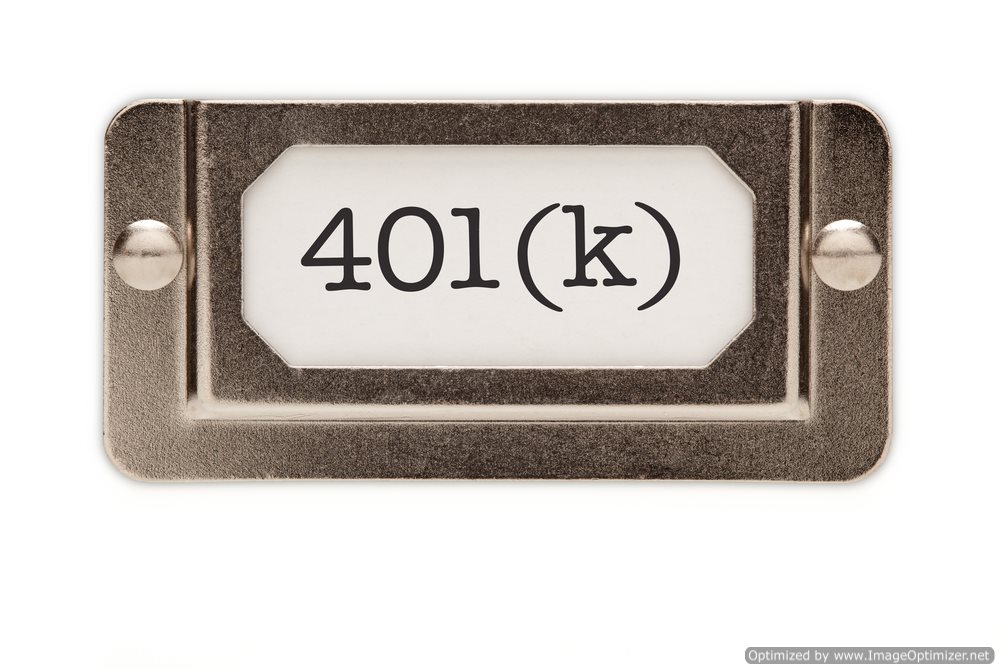
When you are trying to save money there are a number of options that you will have in attempting to build your wealth for future investing. Saving money may seem like an easy task but it requires, budgeting, discipline and the elimination of unnecessary expenses that eat away from your savings. There are many options when saving money. This includes CDs, bonds, savings accounts, college savings accounts and many others.
Savings Accounts
The simplest way to save money, if you don’t have one already, is to open a savings account. A savings account in a banking institution is a stable way to save your money. The upside to a savings account is that the funds are easily accessible by going to your banking institution and making a withdrawal. The downsides are that you can easily access your savings account and make withdrawals. When you are in need of money it is easy to fore go your savings plan for immediate gratification. Another downside is that savings accounts usually have very low interest rates, usually around 2%. Considering the rate of inflation a savings account will not help you gain savings and should only be used for short term saving while you look for, and save, for more lucrative saving opportunities. The low interest rates associated with basic savings accounts is partially due to the ability of the savings account holder to withdraw the funds at any time. In this way, they are different from Certificates of Deposit.
Certificates of Deposit
A certificate of deposit is a better way of accumulating savings than a traditional savings account. A certificate of deposit acts much like a savings account but with one important difference; the certificate of deposit is a savings investment in which the depositor agrees to keep the money in the account for an extended period of time.
Certificates of Deposit are can be purchased in different incremental periods. Usually the time that you must invest your money in are allocated in 3 months, 6 months, 1 year up to 5 years. The amount of interest that you will receive from your savings in a certificate of deposit will depend on a number of factors. The greater the principal invested the greater the interest rate you will receive. In addition, the longer the term, or the smaller the banking institution the higher the interest rate you will receive.
Savings Bonds
Savings bonds are yet another way for you to save money. Savings bonds are a most stable
form of bond. You can get savings bonds through private institutions or through the United States government. A United States Savings Bond is almost guaranteed and they come in many different forms. The two most prevalent are the EE savings bond and the I savings bond.
The EE savings bond is characterized by a stable, long term investment. WIth EE savings bond the federal government will require a long term investment of 20 years in order for the bond to reach its maturity level. There are two types of EE savings bonds: paper EE savings bonds and electronic EE savings bonds. The most important distinction between the two is their return on investment. With a paper EE savings bond the investor will get a yield on return of the value he invested upon the maturity of the bond. This means that if you invested $5,000 then in 20 years you will receive a payment of $5,000 plus the interest accumulated over that period of time. In contrast, an electronic EE savings bond will require you to pay half of the value of the savings bond and upon its maturity you will receive the face value; essentially allowing you to double your investment. You are not required to keep your investment for the 20 year period in either form of EE savings bonds but their is a penalty for early withdrawal. The disadvantages to EE savings bonds are the long maturity length, and the fact that an individual is allowed a maximum of $25,000 of investment per year. EE savings bonds are exempt from state and local taxes but they will be used to calculate federal tax income. In addition, EE savings bonds do not adjust for inflation.
The other type of United States Savings Bond that is very prevalent is the I bond. An I bond is a U.S. savings bond where the yield on maturity is calculated as the fixed rate of return plus inflation. The I bond is periodically adjusted to factor in for inflation and the yield at the end of the maturity will be in a way that you will not lose money based on the inflation rate. One of the disadvantages of an I bond is that it is considered a zero coupon bond. The interest that accumulates over the lifetime of the bond is automatically re-invested into the I bond.
U.S. savings bonds should be used for long term savings and once you purchase a bond it should be forgotten. When looking at the maturity date of bonds you should look at when you may need the money back and how much money you have invested. If the purpose of the savings bond is to accumulate savings for retirement or long into the future then you may want a 20 year bond. If you are looking to save for vacations, future home purchase or a future long term investment like real
estate, then a shorter term bond may be more beneficial.
Corporate savings bonds act in the same way as United States Savings bonds but they do not guarantee the same type of guarantee as a U.S. savings bond. Corporate savings bonds are issued by corporations and other
business entities when they need to gain capital for their business operations. Just as in U.S. Savings bonds, a corporate savings bond will consist of coupons that will be given to the creditor of the bond. Every 6 months the creditor will receive a coupon that consists of the amount of money that is owed to the creditor plus the amount of interest that was agreed to when the bond was issued. The interest rates associated with corporate bonds will often be higher than U.S. savings bonds and the riskier the venture the more interest that the issuer will be required to offer in order to get investments.
401k
The most promising way to build savings is to invest in your companies 401k. A 401k is a savings plan that you set up with your
employer to save for retirement. The retirement savings account has two obvious benefits. The first benefit is that you will be able to save your money in a savings plan through a consistent allocation from your paycheck into your 401k. In this way you don’t even know how much your saving. The amount will be automatically taken from your paycheck and, in addition, your employer will contribute an equal amount to your 401k. So if you contribute $100 a month you will actually be putting $200 a month into your 401k. Another advantage is the time value of money. Your investment in a 401k savings account will allow you to avoid current taxes and put your money to work for you instead of being lost to the government. On the same note, by investing in your 401k you may actually be lowering your tax liability. If you are in the 28% tax bracket and you decide to invest $1000 that $1000 a month will not be included in your taxable income and you may move down to the 20% tax bracket.
529 College Savings Plan
A 529 College Savings Plan is a savings plan that allows parents to save for their children’s college tuition. 529 College Savings Plans and other Qualified Tuition Investment plans are tax deductible and will not be used in compiling the parents gross income for tax purposes.
There are two types of 529 College Savings Plans: prepaid and savings. Prepaid 529 College Savings Plans allow parents to purchase tuition credits at present day rates. This essentially means that a parent who will have a child in college in 20 years may place money in a Prepaid 529 College Savings Plan, at the current rate of tuition, to be used 20 years from that date, even if tuition is higher in the future. For example, if the current per credit tuition is $2,000 and the parent purchases 5 credits through the Prepaid 529 College Savings Plan then it will guarantee those 5 credits even if the per credit tuition rate is $4,000 by the time the child goes to college.
The other type of 529 College Savings Plan is different in that the growth of the Savings 529 College Savings Plan is based on market performance of the investment form, which is usually in the form of mutual funds. In this way you may benefit greatly over a Preferred 529 College Savings Plan in that the market could outperform the rate of tuition increase. However, in the alternative, the Savings 529 College Savings Plan may have stagnant, or negative growth, over time that would not equal or exceed the Prepaid 529 College Savings Plan.
A 529 College Savings Plan may be used for tuition, books, fees, equipment and supplies for any accredited college or university, public or private, in the United States as well as vocational schools and some universities from outside the United States. 529 College Savings Plans may also be used for room and board.
One of the savings advantages of a 529 College Savings Plan is that it affords tax exemption from state taxes. This means that all the money that is contributed into the 529 College Savings Plan will be treated as if the money was never considered part of your income. For example, if your income for the year is $100,000 and you contribute $10,000 to your 529 College Savings Plan in that year then, for tax purposes, you will be treated as if your income for the year was $90,000. 529 College Savings Plans are not irrevocable and the person who invests in the money may withdraw at any time but will incur penalties for early withdrawal. Even though it is perfectly legal to do this the parent will be required to pay income tax on the benefit incurred as well as a 10% early withdrawal penalty.
The exception to the early withdrawal penalties are: the designated beneficiary dies; the designated beneficiary becomes disabled; or the designated beneficiary receives a scholarship, veterans assistance, or employer provided education assistance. If one of these things occurs then the penalties will not apply. Even if none of these exceptions apply no penalty will be incurred by the 529 College Savings Plan holder if, for some reason, the entire allotment of savings is not used on the named beneficiary and the amount remaining is rolled over to another beneficiary. If the leftover amount of the 529 College Savings Plan is rolled over to another qualified recipient within 60 days then the there will be no penalty associated with early withdrawal.
Staying Focused
An important aspect in building your savings is to maintain discipline and set a goal for yourself. Money is just a figure and doesn’t really correlate with incentive to save. For this reason you should set a reward for yourself. For example, if you are able to save $10,000 by the end of the year you should reward yourself with a $2,500 vacation. You should set this goal at the beginning of your savings plan and, unlike having your goal just to save money, it will inspire you and give you motivation. It is also better in that you will see a light at the end of the tunnel instead of a constant, repetitiveness. Your savings goals should be realistic. Do not expect that you will be able to save $10,000 if in order to do that you will have to eliminate all pleasures from your life, live off of bologna sandwiches, and use one ply toilet paper. Live within your means but allow for some leeway so that saving is not a chore. The best way to destroy your savings plan is to set your goals too high and lose interest at the first sign of adversity.
You must stay focused on the future. You will not realize gains from savings immediately and you may not even have any real gain after a year or two but it will happen if you budget accordingly.






























